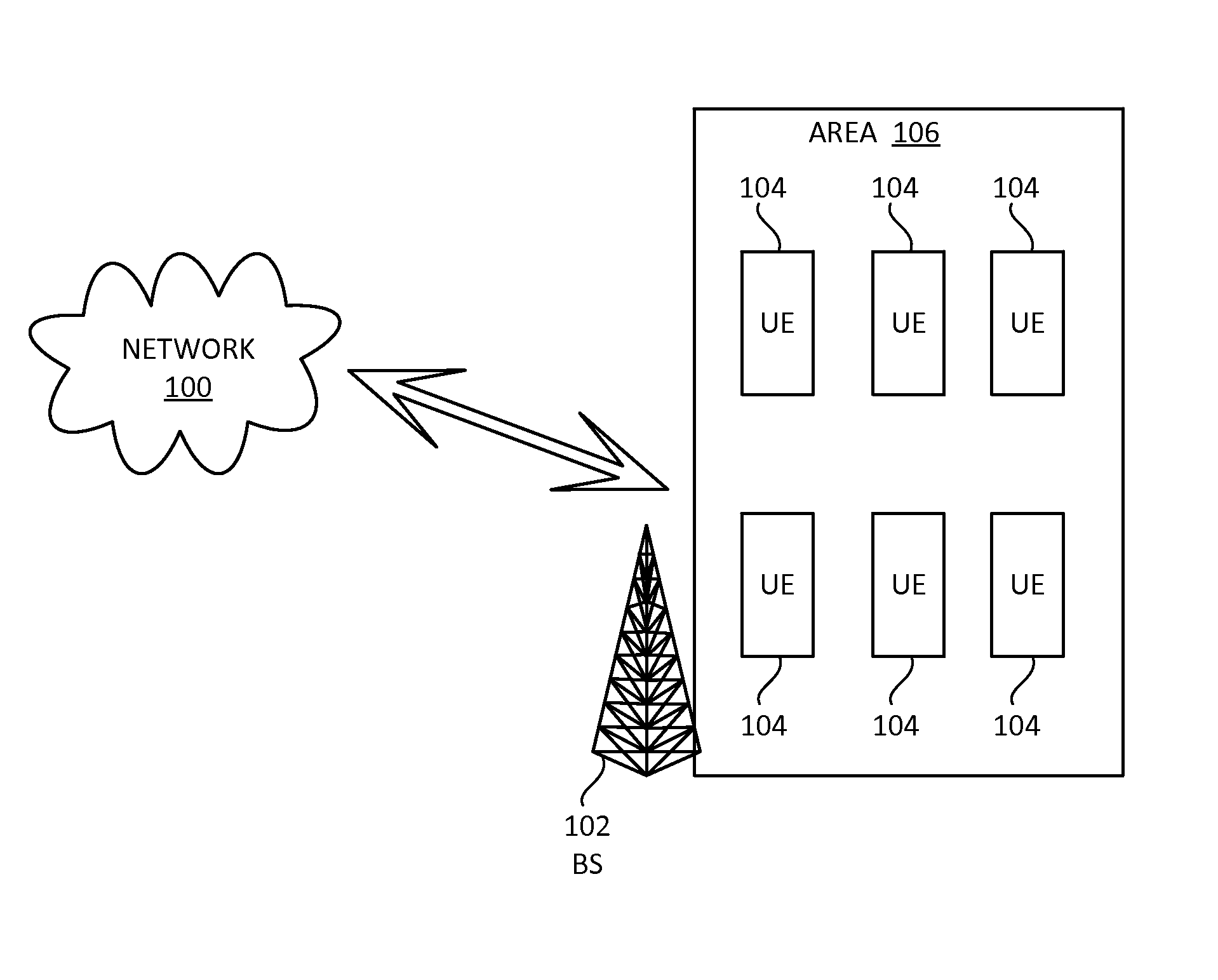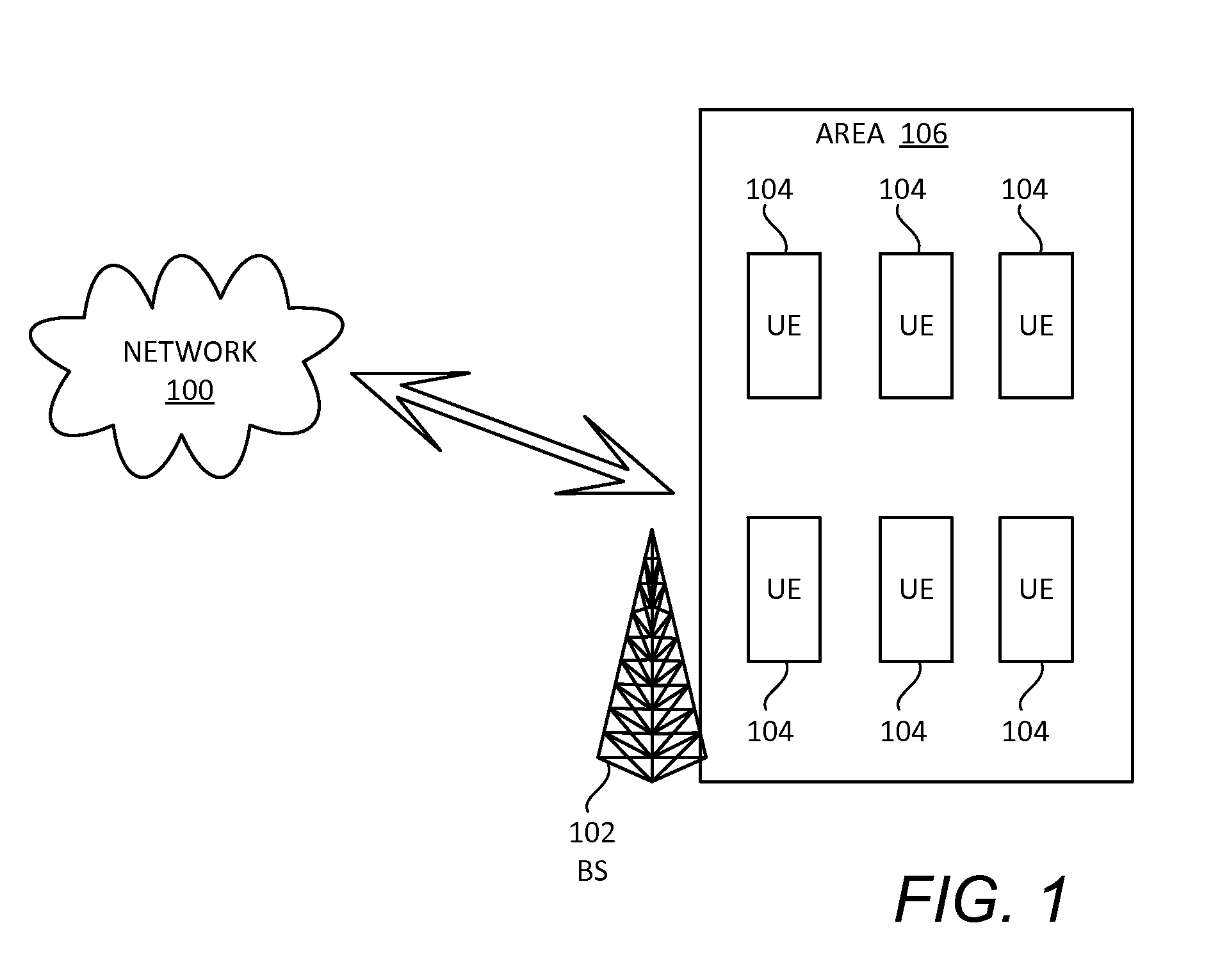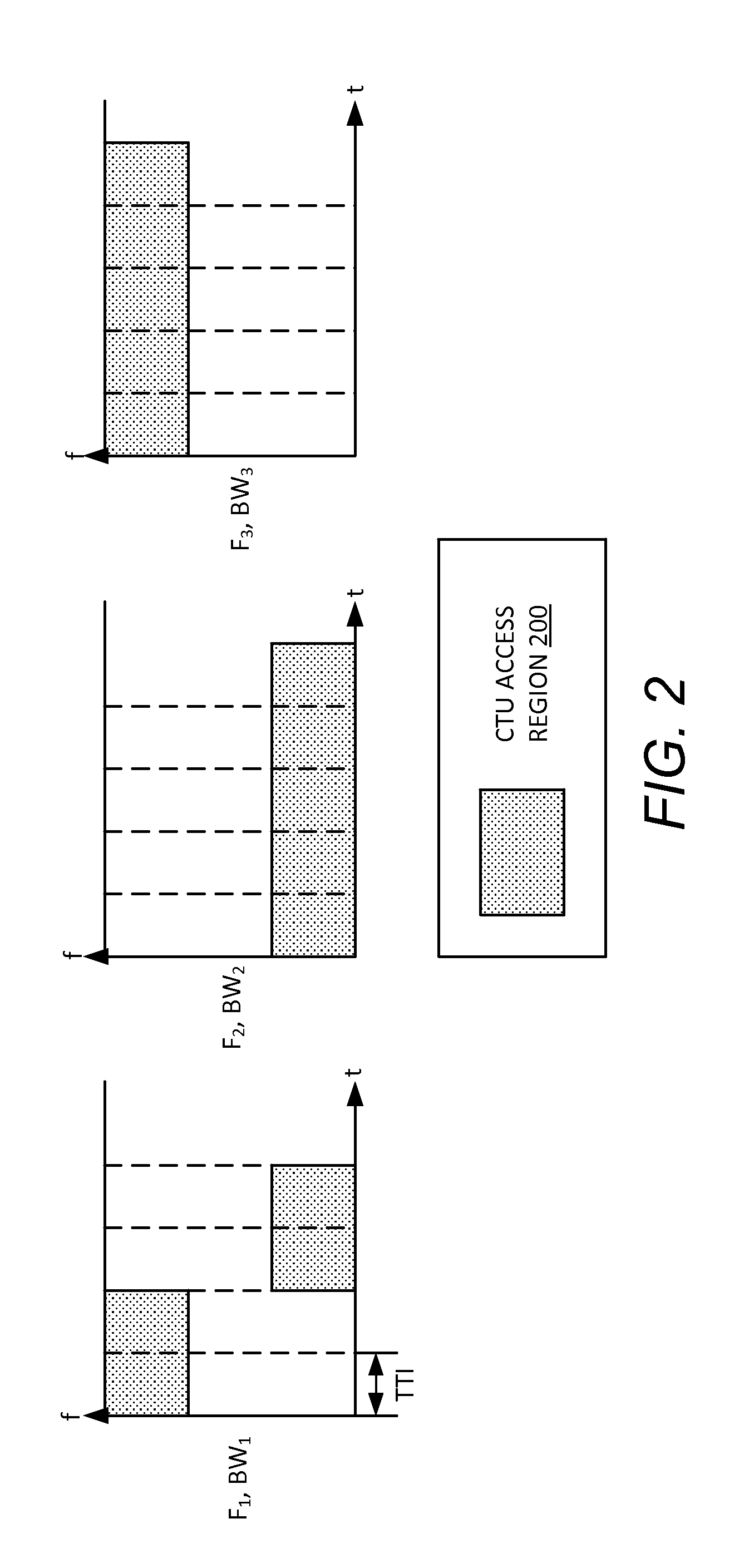Link Adaptation In Grant-Free Multiple Access Systems
- Summary
- Abstract
- Description
- Claims
- Application Information
AI Technical Summary
Benefits of technology
Problems solved by technology
Method used
Image
Examples
Embodiment Construction
[0021]A wireless communication system and associated methods of operation are described that provide link adaptation for grant-free uplink transmission schemes in multiple access architectures. Quasi-orthogonal multiple access schemes such as low density signature orthogonal frequency-division multiplexing (LDS-OFDM) and sparse code multiple access (SCMA) systems allow resource overloading between different user equipment (UE). Grant-free uplink transmission permits user equipment to send uplink transmissions without a base station (BS) allocating resources to request / grant mechanisms. Individual UEs contend for and access uplink resources without a request / grant mechanism. This provides a reduction in the total amount of network overhead resources for request / grant signaling.
[0022]Link adaptation is provided to permit the UEs to adapt grant-free uplink transmissions based on local parameters such as channel state information, path loss, and / or traffic characteristics. This provides...
PUM
 Login to View More
Login to View More Abstract
Description
Claims
Application Information
 Login to View More
Login to View More - R&D
- Intellectual Property
- Life Sciences
- Materials
- Tech Scout
- Unparalleled Data Quality
- Higher Quality Content
- 60% Fewer Hallucinations
Browse by: Latest US Patents, China's latest patents, Technical Efficacy Thesaurus, Application Domain, Technology Topic, Popular Technical Reports.
© 2025 PatSnap. All rights reserved.Legal|Privacy policy|Modern Slavery Act Transparency Statement|Sitemap|About US| Contact US: help@patsnap.com



